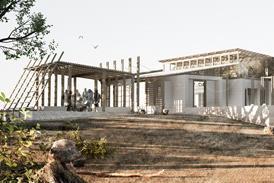- Home
- Intelligence for Architects
- Subscribe
- Jobs
- Events

2025 events calendar Explore now 
Keep up to date
Find out more
- Programmes
- CPD
- More from navigation items
The regulator steps into the spotlight

Ben Flatman meets Hugh Simpson, chief executive of the Architects Registration Board, to discuss education reform, CPD and the future of regulation – and why he is happy for ARB to be an “activist regulator”
It is difficult to talk about the future of architecture without also talking about regulation. In the years since Grenfell, the architectural profession has been forced to reckon with its own failings and its role within the systemic shortcomings across construction that contributed to the tragedy.
Into this unsettled territory has stepped Hugh Simpson, a former health-sector regulator with no background in the built environment but a deep understanding of what happens when regulation fails.
Since joining the Architects Registration Board (ARB) as chief executive in 2020, Simpson has set about rethinking what it means to regulate in the public good. Under his leadership, ARB has pushed through major reforms to architectural education, introduced mandatory continuing professional development (CPD), and negotiated a series of mutual recognition agreements (MRAs) with architectural bodies around the world.
…
This content is available to registered users | Already registered?Login here
You are not currently logged in.
To continue reading this story, sign up for free guest access
Existing Subscriber? LOGIN
REGISTER for free access on selected stories and sign up for email alerts. You get:
- Up to the minute architecture news from around the UK
- Breaking, daily and weekly e-newsletters
Subscribe to Building Design and you will benefit from:

- Unlimited news
- Reviews of the latest buildings from all corners of the world
- Technical studies
- Full access to all our online archives
- PLUS you will receive a digital copy of WA100 worth over £45
Subscribe now for unlimited access.






